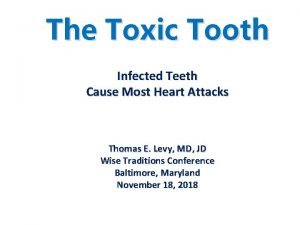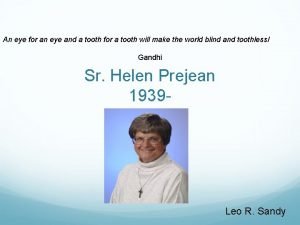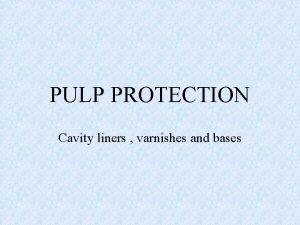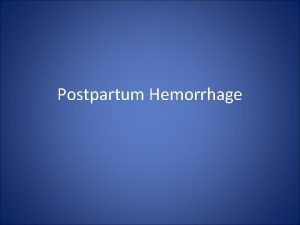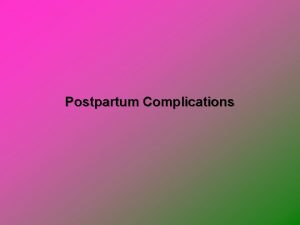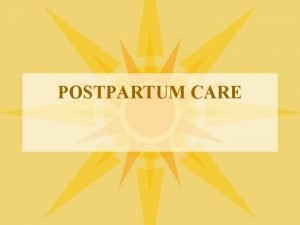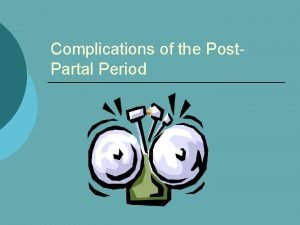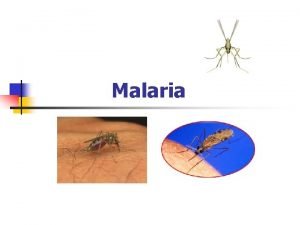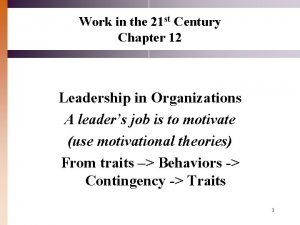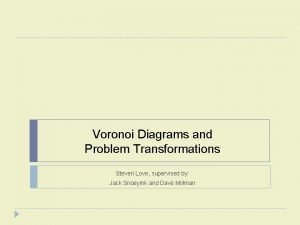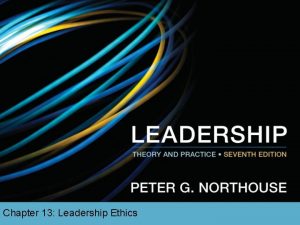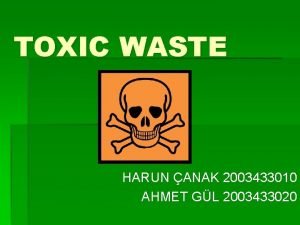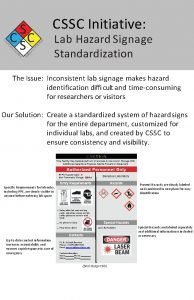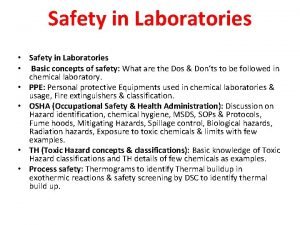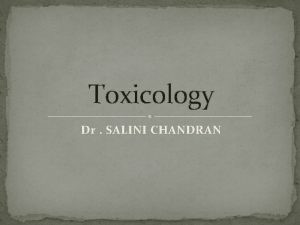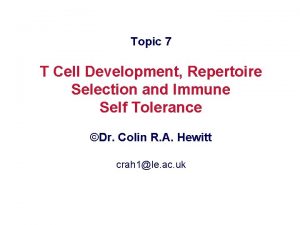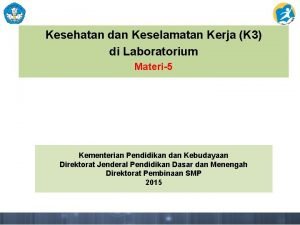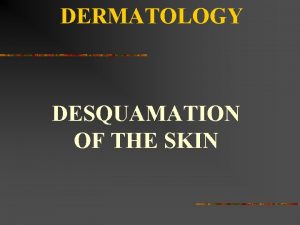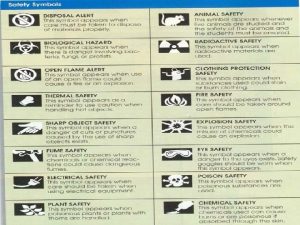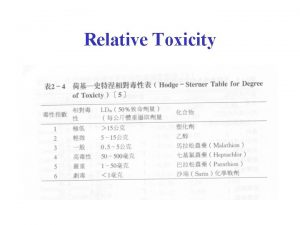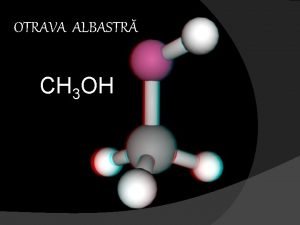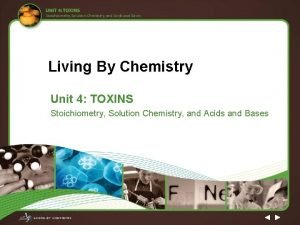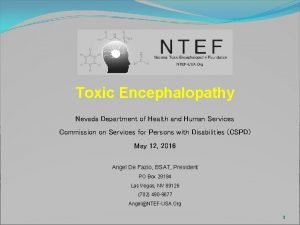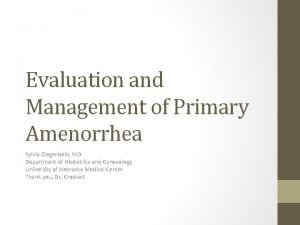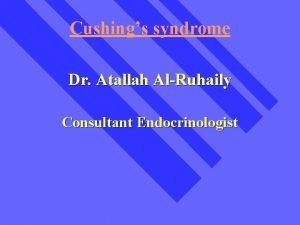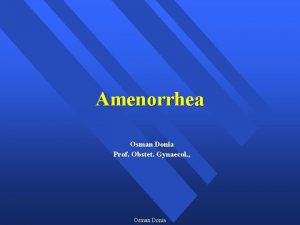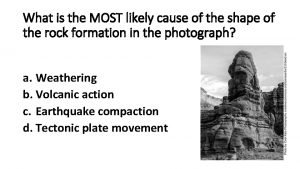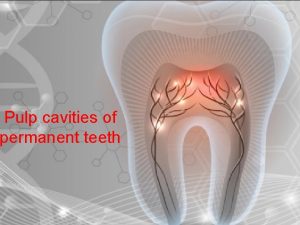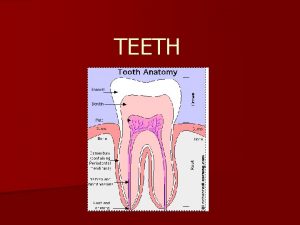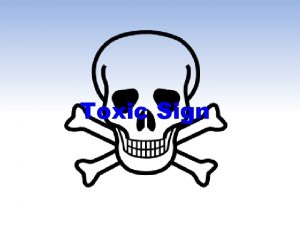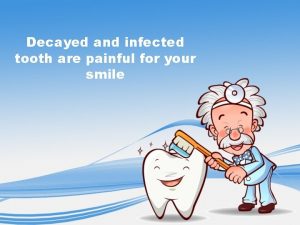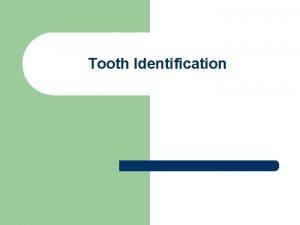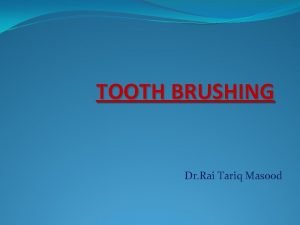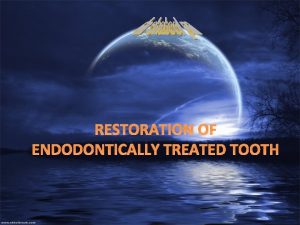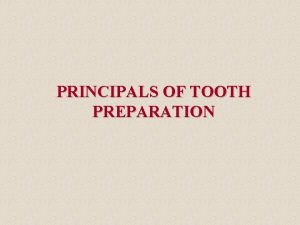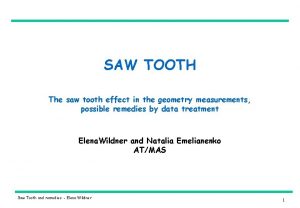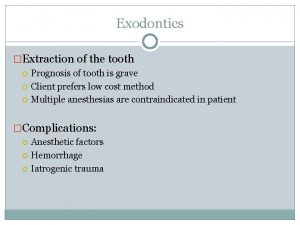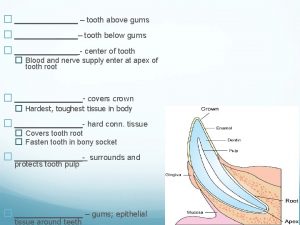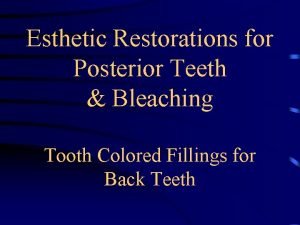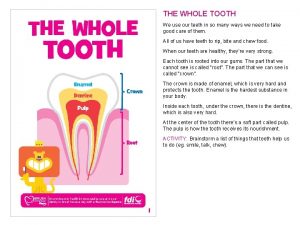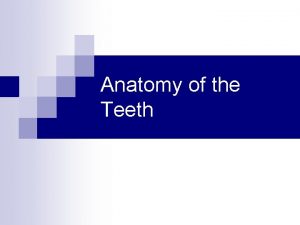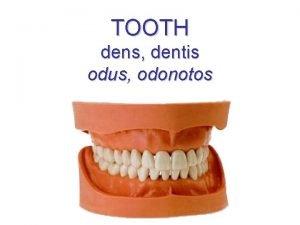The Toxic Tooth Infected Teeth Cause Most Heart































































![Periodontal Disease and Chronic Degenerative Disease 5. Cerebrovascular disease and stroke [27418418] 6. General Periodontal Disease and Chronic Degenerative Disease 5. Cerebrovascular disease and stroke [27418418] 6. General](https://slidetodoc.com/presentation_image/441b21e42e9ec065792b74e25caa65d0/image-64.jpg)
![Periodontal Disease and Chronic Degenerative Disease 13. Neurological disease a. Alzheimer’s [26385886] b. Parkinson’s Periodontal Disease and Chronic Degenerative Disease 13. Neurological disease a. Alzheimer’s [26385886] b. Parkinson’s](https://slidetodoc.com/presentation_image/441b21e42e9ec065792b74e25caa65d0/image-65.jpg)
![Periodontal Disease and Chronic Degenerative Disease 14. Cancer a. Breast [27485780] b. Pancreatic [26474422] Periodontal Disease and Chronic Degenerative Disease 14. Cancer a. Breast [27485780] b. Pancreatic [26474422]](https://slidetodoc.com/presentation_image/441b21e42e9ec065792b74e25caa65d0/image-66.jpg)










- Slides: 76

The Toxic Tooth Infected Teeth Cause Most Heart Attacks Thomas E. Levy, MD, JD Wise Traditions Conference Baltimore, Maryland November 18, 2018

Reference Checking Go to: http: //www. ncbi. nlm. nih. gov/pubmed/ In the Pub. Med search box, enter the seven or eight digit number, by itself, at the end of each reference in this presentation. This is the Pub. Med Identifier (PMID) number Then click on “Search” and you will go directly to the Abstract of that article, or for a few articles, you will have access to the full article. If there is no PMID number, it is not available on Pub. Med.

Promoters of Chronic Degenerative Diseases All promoters of chronic degenerative diseases share one common denominator: they cause/promote/result in: Increased Oxidative Stress

Promoters of Chronic Degenerative Diseases All chronic disease is the result of the following factors, singularly or in combination: 1. Infection-related toxins (statistically #1 factor) 2. Toxins unrelated to infections 3. Inadequate antioxidant/nutrient presence 4. Increased oxidative stress from compromised metabolic pathways secondary to genetic shortcomings 5. Hormonal deficiencies/imbalances (strongly promote infection dissemination with greater oxidative stress)

Infections and Toxins: Common Denominator Question: What do all toxins and infections have in common? Answer: All infections and all toxins cause cell/tissue damage and produce symptoms by increasing oxidative stress. No exceptions.

Increased Oxidative Stress and Disease Increased oxidative stress (intracellular and/or extracellular) causes all diseases and their symptoms (more technically, increased oxidative stress IS all disease) The many variations in clinical disease expression pertain to: 1. The intracellular organelles, cells, tissues, and/or areas of the body with increased oxidative stress 2. The biochemical properties of the molecules (toxins) directly causing the increased oxidative stress 3. The genetic predispositions (oxidative stress susceptibility) present in toxin-affected areas 4. The chronicity of the increased oxidative stress 5. The degree of increased oxidative stress

Redox Physiology Nutrient/Toxin Relationship The defining property of a nutrient is to metabolize into one or more substances that have the ability to donate electrons or cause electrons to be donated to a biomolecule(s) [REDUCTION]: Antioxidant = Nutrient = Antioxidant

Redox Physiology Nutrient/Toxin Relationship The defining property of a toxin, directly or indirectly, is its ability to take electrons or cause electrons to be taken from a biomolecule(s) [OXIDATION]: Pro-oxidant = Toxin = Pro-oxidant

Redox Physiology Even though there is a tremendous variety of molecular structure among all of the known toxins, they ALL SHARE the property of causing the depletion of electrons from other molecules, oxidizing them, resulting in a state of increased oxidative stress. They also share the property of HOLDING ON to those electrons, and not allowing themselves to be readily oxidized again and passing those electrons along, as is seen with an antioxidant molecule like vitamin C. Toxins are chemically more stable after they receive their electrons and no longer seeking further stability. If a molecule does not cause the loss of one or more electrons from another molecule it IS NOT TOXIC, and it CANNOT BE TOXIC. Toxicity and any symptoms of toxicity cannot exist unless electrons are being taken from other molecules (oxidation) and retained by the toxin (rather than relayed, as with an oxidized antioxidant. )

Increased Oxidative Stress and Redox Physiology The biomolecules of the body (enzymes, proteins, fats, sugars, structural molecules, etc. ) exist in either a reduced or an oxidized state. Rarely, a biomolecule might be chemically inert and not be technically susceptible to oxidation, although it would still be technically in a reduced state, with a full contingent of elections, capable of normal function. When reduced, the biomolecules have their optimal state of electron repletion/saturation; oxidized biomolecules are in a state of electron depletion. Reduced biomolecules are capable of optimal physiological function; oxidized biomolecules are in a state of decreased to absent physiological function.

Increased Oxidative Stress and Redox Physiology Furthermore, as oxidative stress increases and the redox balance ratio decreases, there is less effective electron flow in a given tissue, organ, multicellular, or unicellular microenvironment. Redox molecules, like vitamin C, promote these vital microcurrents which also help facilitate the maintenance of healthy transmembrane electrical potentials (voltages). The health of any area of the body is directly related to its ability to permit electron flow through the tissues. Oxidized biomolecules block this flow, or severely impede it, depending on their prominence (concentration) and distribution in a given area/tissue of the body.

Increased Oxidative Stress and Redox Physiology The degree to which a tissue, organ, or a specific microenvironment in the body is optimally functional (wellness) versus being decreased in, or devoid of, function (sickness) is directly reflected by the ratio of reduced biomolecules to oxidized biomolecules (redox ratio: reduction/oxidation) in that area of the body. A higher redox ratio reflects better physiological function and health; a lower ratio reflects variable degrees of disease.

Treatment Principles for All Chronic Degenerative Diseases 1. Prevent/minimize new daily toxin exposure (environmental, dietary, digestive) 2. Neutralize existing toxins present in body 3. Excrete toxin stores in a non-toxic, or minimally toxic, manner 4. Resolve infections, and eliminate the reasons for contracting new infections 5. Supplement/Eat optimally to maximize the antioxidant/nutrient status of the body as completely as possible 6. Address hormone imbalance, typically deficiencies of testosterone, estrogen, and/or thyroid hormone #1 through #4—work to decrease pro-oxidant presence/effect #5 and #6—work to increase antioxidant presence/effect

Primary Oral Sources of Increased Oxidative Stress 1. Chronically infected teeth (typically asymptomatic, with apical periodontitis radiolucencies—abscesses) 2. Root canal-treated teeth (always with apical pathology) 3. Acutely, symptomatically infected teeth (tiny minority of infected teeth) 4. Chronic periodontal (gum) infection/inflammation 5. Cavitational gangrene (old extractions and around root tips of root canal-treated teeth) 6. Chronically infected tonsils (draining root canals and other infected teeth) 7. Infected dental implants 8. Toxic metals (mercury, nickel, etc. )

Primary Sources of Oral Infection/Toxicity In terms of public health impact, the primary reasons for causing and promoting MOST chronic degenerative diseases are: 1. Root-canal treated teeth and asymptomatic infected teeth 2. Symptomatic infected teeth 3. Chronic gum disease (often leading to #1 and #2) 4. Chronically infected tonsils (often secondary to #1, #2, and #3)

The Root Canal. Treated Tooth Over 5000 consecutive extracted root canal-treated teeth were examined analyzed. 100% had pathogens and highly potent pathogen-related toxins. If there does exist a nontoxic root canal-treated tooth, it remains to be found and reported. Of note, “normal” teeth extracted for orthodontic purposes and analyzed showed no toxins or pathogens. All root canal-treated teeth continually produce endogenous toxins as the pathogens proliferate. Root canals that have been “identified” as infected have been found to have fungi, viruses, and over 460 different types of bacteria. (Siqueira, 2009 [19828883]) Any combination from this array of microbes and pathogens, however, represents what can be found in all root canal-treated teeth, as well as all chronically infected teeth that were not root-canaled.

The Root Canal. Treated Tooth Once it is realized that all root canals are chronically infected, the mainstream dental literature provides the evidence clearly showing the wide array of pathogens and microbes that are present in these treated teeth. (Vidana 2011 [21155997]; Nobrega 2013 [23408792]; Siqueira 2013 [23554416]) Furthermore, this literature also documents the presence of endotoxins in these teeth. On the teeth that the researchers “acknowledged” to be infected, endotoxins were found to be present in 30 of 30 such teeth (Gomes 2012 [22794210]) A similar study found endotoxins in 21 of 21 root canals acknowledged to be infected. (Martinho 2011 [21238796]) Another study that looked at “asymptomatic” and symptomatic root canals, the DNA of bacterial pathogens was seen in 34 of 34 patients. (Rocas 2011 [21846535]) Finding a sterile root canal-treated tooth would be as amazing as finding a sterile mouth; either finding simply does not exist, as it is the polymicrobial mouth that continually “feeds” the dentinal tubules and excavated pulp, draining microbes and pathogens into the apical area.

Root Canal. Treated Tooth 1. The nature of the procedure assuring a chronically infected, non-vital pulp 100% of the time (clinical impact variable) 2. Immune system no longer has access to much of the tooth, or to the dentinal tubules 3. Fluid flow reversal post-procedure 4. Anaerobic environment—enormous toxicity (similarity to botulism) 5. “Successful” procedure results in a pain-free, wellsealed albeit still infected, tooth; with debulking of infectious/toxin content, but never resulting in a sterile tooth (minimal CAP on 3 D, CRP below 1. 0)

Root Canal. Treated Tooth 6. For the molars and larger teeth, a perfect endogenous delivery system of pathogens and toxins into the venous blood and lymphatic drainage (actually better than IV push) 7. From the draining veins, first high-pressure blood vessels to receive the pathogens/toxins: coronary arteries (and then the cerebral arteries) 8. From the draining lymphatics, a chronic to-andfro sharing of the pathogens/toxins with the lymphatic circulation of the breast(s) and other head and neck areas

Root Canal. Treated Tooth Always highly toxic, but variably toxic, depending on: 1. Unique pathogen flora (bacteria, viruses, fungi, protozoa) and their interactions [Waltimo, 2003 (12764075); Noir, 2004 (15574679); Siqueira, 2007 (18278296)] 2. The tooth involved (small incisor versus large molar) 3. Containment; the degree to which the supporting bone becomes cavitated, further facilitating dissemination 4. Genetic predisposition to different diseases 5. How long the root canal has been present, and the expertise involved in doing it and optimally sealing off the evacuated pulp space 6. The quality and quantity of good nutrition and supplementation 7. Hormonal status, especially thyroid, directly and strongly affecting the likelihood and degree to which focal infection can spread and re-seed, as in the coronary and cerebral artery endothelial layers 8. Age and general health of the patient (significant osteopenia, osteoporosis elsewhere in the body? ; immunocompromised? )

Chronic Apical Periodontitis (CAP) “Apical periodontitis is a group of inflammatory diseases caused by microorganisms (mainly bacteria) infecting the necrotic root canal system. The process starts after pulp necrosis as a result of caries, trauma or iatrogenic procedures, when bacterial invade and colonize the root canal system. ” (Siqueira, 2007 [18278296]) (The upper part of the tooth is always non-vital, or dead. )

Chronic Apical Periodontitis (CAP) “Apical periodontitis is a sequel to endodontic infection and manifests itself as the host defense response to microbial challenge emanating from the root canal system. ” “Initially, the tooth pulp becomes infected and necrotic by an autogenous oral microflora. ” (Nair, 2004 [15574679]) CAP demonstrates characteristic radiolucencies at the root tips, which represent both cystic and noncystic infected lesions, both of which can be regarded as chronic abscess pathology.

Chronic Apical Periodontitis (CAP) The radiolucencies of CAP always indicate the presence of chronic infection and a necrotic tooth pulp. The presence of microbes/pathogens is required for a pulp breach to develop CAP: In germ-free rats with molar pulps exposed to the oral cavity, no CAP developed, while control rats with a conventional flora developed massive periapical radiolucencies. (Kakehashi, 1965 [14342926])

Chronic Apical Periodontitis (CAP) “Apical periodontitis (AP) is a complex multifactorial condition originating from an infected necrotic pulp or a failed endodontic treatment. AP often develops asymptomatically, and the prognosis is typically less favorable when it is detected late. ” (Berlinck, 2015 [25760068]) Actually, AP is most commonly an asymptomatic process, well over 95% of the time. The painful infected tooth is the rare exception among infected teeth. How quickly an abscess develops appears important in whether it causes pain.

Regular X-ray vs. 3 D Digital X-ray In root canal-treated teeth, which are all infected, regular X-ray shows clear chronic apical periodontitis (radiolucencies from bone resorption secondary to infection) between 40 to 70% of the time, largely dependent on the quality of the X-ray and the experience of the interpreting dentist. De. Moor, 2000 [11307451]; Saunders, 1998 [9744239]; Gunduz, 2011 [21689415]; Weiger, 1997 [9550033]. A post-mortem study also showed that digital X-ray exam was significantly better in finding lesions histopathologically documented to be CAP than regular X-ray. (Kanagasingam, 2016 [27063356]).

Regular X-ray vs. 3 D Digital X-ray In one revealing study a careful examination was made of the same 46 root canal-treated teeth with regular X-rays and then with the 3 D Digital X-rays. Periapical radioluciencies (infection) were seen on 70% of the 2 D exams and on 91% of the 3 D exams. Lofthag-Hansen, 2007 [17178504] Another study reported similar numbers with even greater accuracy for the 3 D exams. (Leonardi Ditra, 2016 [26902914]. MRI imaging appears to be very comparable in accuracy and detail to 3 D imaging. (Geibel, 2015 [25594373] Optimally performed and interpreted 3 D imaging is also good for cavitation diagnosis and follow-up (as well as many other types of oral pathology)

Regular X-ray vs. 3 D Digital X-ray While infection is always present in root canals, pathology is clearly very often missed by regular Xrays, especially with less critically interpreted studies. Even though the root canal-treated tooth is always infected, larger radiolucencies indicate greater infectious load at the root tips and can more easily convince the otherwise reluctant dentist to extract the chronically infected tooth.

Regular X-ray vs. 3 D Digital X-ray Panoramic—least useful (<40 to 50%)? Intraoral periapical—more useful (60 to 70%)? Digital subtraction technology better than conventional film 3 D cone beam—most useful (90 to 98%)? Remember to be absolutely clear what is being looked for on a 3 D X-ray. Specify “rule out, or looking for, any evidence of apical radiolucencies or infection, of any degree, on all teeth present”

Root Canal and Periapical Infection

Chronic Apical Periodontitis (CAP)

Chronic Apical Periodontitis CAP and chronic coronary artery disease: In a study of 103 patients undergoing coronary angiography 65% had coronary artery disease and 42% had CAP. Patients with CAP had a 2. 8 times higher risk of coronary artery disease. (No differentiation between CAP in teeth with root canal treatments versus those without. This indicated that presence of CAP was independently associated with coronary artery disease in this study. ) (Costa, 2014 [24461397]) In another study, subjects with CAP were 530% (5. 3 -fold) more likely to have cardiovascular disease than those without (An, 2016 [27091354])

Inflammation and Coronary Artery Disease Inflammation is now accepted as the primary cause for initiating and evolving atherosclerosis. [Rosenfeld (2013), 23357128] Furthermore, atherosclerosis is now considered a chronic inflammatory disease [Legein (2013), 23430000]

But What Causes the Chronic Inflammation? Inflammation requires a pro-oxidant presence; for coronary artery disease, this is the seeding of pathogens and associated toxins from oral infectious sources into the coronary endothelium. When the seeding does not stop, the immune inflammatory response becomes chronic, and it becomes the disease it was designed to prevent. As Hal A. Huggins, DDS, MS, the founder of Biological Dentistry, put it: “You can’t dry off while you are still in the shower. ”

Root Canal. Treated Tooth Root Canals and Heart Attacks: The DNA of oral pathogens typical for root canal and gum infection flora, not just “bacteria in general’ that has been consistently been identified in coronary atherosclerotic plaque [Haraszthy (2000), 11063387; Mattila (2005), 16277580; Mahendra (2010), 20657096]

But What Causes the Chronic Inflammation? Pathogens, along with their associated toxins, are now accepted as a major (or entire? ? ) reason for chronic inflammation (aka chronically increased oxidative stress) at all stages of atherosclerosis [Bzowska (2012), 22556042] ****100% (38 of 38) plaque specimens removed by atherectomy (“roto-rooter”) in coronary artery disease patients had a broad variety (>50 different species) of bacterial signatures!! (normal—NO pathogens ever present) [Ott (2006), 16490835]****

But What Causes the Chronic Inflammation? Periodontal disease has long been clearly “linked” to the presence and evolution of atherosclerosis [Andriankaja (2011), 21375559; Shrihari (2012), 22313976]. Periodontal disease (gum infection) has also been recognized as an independent risk factor for coronary artery disease [Humphrey (2008), 18807098].

Root Canal. Treated Tooth Root Canals and Heart Attacks: DNA of pathogens typical for periodontal infection and endodontic (root canal) origin were present in the blood clots aspirated from patients with acute myocardial infarction. [Pessi (2013), 23418311] 101 patients: endodontic (root canal-treated tooth) origin— 78%; periodontal origin— 35% Total amount of DNA found in the clots was 16 times higher (1, 600%) than was present in just the arterial blood

Root Canal. Treated Tooth (and CAP tooth) Root Canals and Heart Attacks: Pessi’s study now finally converts the “link, association, correlation, risk factor” etc. conclusions of so many previous studies examining the mouthheart disease connection to the now clear and inescapable conclusion: Root canal-treated teeth and periodontal disease have a cause-and-effect relationship to coronary artery disease and heart attacks. Another study reported that “incident lesions” (aka, chronic apical periodontitis radiolucencies from chronic infection) of root canal origin on the X-rays of a group of individuals were associated with the more rapid development of coronary artery disease. (Caplan 2006 [17062738]) Similar findings have been seen more recently. (Pasqualini 2012 [23146639]; Willershausen 2013 [23604464]; Willershausen 2014 [23604464]) Furthermore, the size of the radiolucencies relates to higher amounts of endotoxins being present. (Cardoso, 2015 [25935504])

CAP and Endodontic Therapy CAP radiolucencies correlated with aortic atherosclerotic burden. This burden increased with age and the number of CAP radiolucencies. Interestingly, CAP in root canal-treated teeth did not show a quantifiable correlation, probably indicating a positive result from debulking the apical infection with better sealing off between the evacuated pulp and the apex. (Petersen, 2014 [24338091]). Pre-existing CAP was the reason for root canal treatment 13% of the time in another study. (Kim, 2014 [25110645])

Chronic Apical Periodontitis (CAP) Since there is already clear-cut documentation that root canal-treated teeth directly cause many heart attacks, this study by Petersen et al. also indicates that the asymptomatically abscessed tooth will be expected to have an even greater negative impact on the coronary arteries and on chronic degenerative disease than the competently root canal-treated tooth with minimal or no residual CAP. Statistically, both are bad, but asymptomatic CAP would appear to be worse.

How Common is Chronic Apical Periodontitis (CAP)? In a study using standard panoramic X-rays, 4, 617 teeth in 206 adults were examined. 6. 6% of all teeth demonstrated CAP, and 40. 4% of root canal-treated teeth showed CAP. (De Moor, 2000 [11307451]) The improved resolution of 3 D X-ray, not utilized in this study, would indicate that higher quality X-ray would be expected to find CAP in 10 to 15% of all teeth examined. This examination for CAP was done on asymptomatic teeth, and does not include data on the many teeth that are symptomatic and painful secondary to the infection. This should not be a surprise, since most root canal-treated teeth (>90%) have variable degrees of CAP, and are completely asymptomatic. (Garcia, 2007 [18059244])

How Common is Chronic Apical Periodontitis (CAP)? A Nigerian study looked at routine full mouth dental X-ray examination in 285 patients, ages ranging between 18 and 60. Apical periodontitis was found in 74% of these patients, at an average of 2. 8 per patient with this finding. This number did include teeth that had root canal treatments. 87% of patients from 40 to 49 years of age had apical periodontitis. (Oginni, 2015 [26259158])

How Common is Chronic Apical Periodontitis (CAP)? Regular X-ray (panoramic) found CAP in 9% of 120, 635 teeth in 5, 335 patients. 39% of root canal-treated teeth showed CAP, demonstrating that a minority of CAP was likely detected relative to quality 3 D X-ray examinations, since 3 D typically finds some CAP on over 90% of root canal-treated teeth. (Huumonen, 2016 [26919266]). Similar numbers in a large Brazilian study. (Berlinck, 2015 [25760068]) Compared with similar studies comparing 2 D and 3 D X-ray teeth examinations, this implies CAP is present in as many as 20% of teeth examined. Overall, then, the current literature indicates somewhere between 7 and 20% of teeth in adult population, not root canal-treated, have CAP. Even the 7% figure is astronomical in terms of public health impact.

How Common is Chronic Apical Periodontitis (CAP)? Abutment teeth are teeth roots used to anchor permanent bridges, and sometimes dentures and implants. Such teeth have had extensive removal of enamel and dentin in their preparation. In 1, 000 adults 46. 5% of 986 abutment teeth that had root canal treatment showed CAP. 25. 3% of 3, 670 abutment teeth that were not root canal-treated showed CAP. (Gumru, 2015 [24451397])

CAP, Abutment Tooth

How Common is Chronic Apical Periodontitis (CAP)? Based on the accuracy of regular X-ray versus 3 D X-ray in other studies, it would appear that roughly 40 to 50% of abutment teeth properly examined by 3 D X-ray would reveal CAD. As abutment teeth are often some of the primary teeth involving in extensive chewing, this is a very large figure with regard to body-wide toxicity and the seeding of focal infection throughout the body.

Root Canal. Treated Tooth In the Journal of the American Dental Association, it was stated that individuals who reported having had two or more root canal-treated teeth were statistically more likely to have coronary artery disease. (Caplan 2009 [19654253]). All dental patients should be made aware of this study (and a summary of the rest of the data already cited) in their informed consent before receiving a root canal procedure.

Inflammation, Focal Infection, and Pathogens Consistent with the seeding of coronary atheromas with oral pathogens of root canal and periodontal origin, strong evidence also indicates the same thing occurs in cerebrovascular arteries as in the coronary arteries. Root canal-related bacteria were found in a majority of patients with ruptured and unruptured intracranial aneurysms. [Pyysalo (2013), 23761916; Pyysalo (2016), 26777430]

Inflammation, Focal Infection, and Pathogens The same group that looked at root canal/periodontal pathogens accumulating in acute MI thrombi also looked at the pericardial fluid post-mortem of coronary artery disease patients. A sizeable majority of the fluid specimens had oral pathogenspecific DNA detectable by PCR (polymerase chain reaction) testing, and the worse the coronary artery disease was, the greater the total amount of pathogen DNA was found in the fluid. [Louhelainen (2014), 25412607]

Root Canal. Treated Tooth In addition to the cause-and-effect relationship that is now established between root canals and atherosclerosis, a strong link has also been long-noted between root canals and cancer. In the 1950 s when very few root canals were being done, relative to today, Dr. Josef Issels found that 98% of his adult advanced cancer patients had, in Issels’ words, “between two and ten dead teeth. ” Dr. Issels categorized a root canal as a dead tooth. [Issels (2005) Cancer: A Second Opinion, Garden City Park, NY: Square One Publishers, Inc. ] Issels always extracted these teeth first, and his cancer survival rates were quite phenomenal. “Dead” teeth represent the sum total of root canal-treated teeth and asymptomatically infected teeth (apical radiolucencies)

Root Canal. Treated Tooth The draining lymphatics and veins of the jaw and mandible make significant antioxidant depletion (increased oxidative stress) most likely to occur to the greatest degree in the head, neck, and chest (lymphatics) and the coronary/cerebral arteries (venous drainage). Once the pathogens and toxins enter the venous drainage, the first artery to be encountered is the coronary artery, with the attendant high arterial pressure and shear force facilitating their endothelial localization/implantation.

Root Canals and Other Infected Teeth A regular Panorex mouth X-ray misses a lot of pathology. 3 D digital X-rays of the mouth need to become an integral part of the routine baseline evaluation of any chronic degenerative disease patient, especially heart disease and cancer. The patient does not have to have chronic sinusitis for a chronically infected tooth to be present. And you will never know such a tooth is present if you don’t look for it. You don’t know someone has diabetes until you measure their blood sugar.

Panorex X-Ray (2 D)

CAP and Sinus Infection In addition to all the other reasons for looking proactively for asymptomatic infected teeth, you should also always do a thorough 3 D examination of the teeth in any patient with chronic or unresolving sinusitis problems, or even chronic rhinitis. Anyone who tells you they have any trouble at all getting a good night’s sleep due to nasal stuffiness should be evaluated in this fashion. Kulacz et al. (2004) “An unsuccessful sinus surgery caused by dental involvement within the floor of the maxillary sinus” Operative Techniques in Otolaryngology—Head and Neck Surgery 15: 2 -3.

Maxillary Root Canal and Chronic Sinus Infection (3 D)

CAP without Root Canal Treatment & Chronic Sinus Pathology (3 D)

Lymphatics, Neck and Chest

Lymphatics, Neck and Chest While the lymphatic system is designed to flow in only one direction, disease, inflammation (as would be seen with the chronic presence of oral pathogen toxins in the lymph), enlarged lymph nodes, and other conditions can result in retrograde lymphatic flow as well. This effective “sharing” of lymphatically-drained pathogens and toxins makes the head, neck, and chest especially sensitive to the antioxidant depletion caused by root canals, and it is a major factor in the causation of cancer in the head, neck, and chest. Any treatment plan in a patient with a brain tumor or breast cancer that does not include a proper extraction of root canals and other infected teeth is missing the most consistent and reliable way to both get a tumor remission and a maintenance of that remission (aka CURE), without relapse or the appearance of a new malignancy. The cause of a cancer must be eliminated along with the cancer itself in any complete cancer treatment protocol.

Chronically Infected Teeth, Heart Disease, and Cancer CAP teeth, both with and without root canal treatments, due to its extraordinary ability to deplete antioxidants and promote chronic inflammation in affected tissues and organs, can be considered: 1. The single most important cause of atherosclerosis and heart attacks, and 2. The single most important cause of cancer of the head, neck, and chest. Currently, about 25 million root canal procedures are performed every year. These infected teeth are in addition to the enormous number of asymptomatic CAP teeth.

CAP and Chronic Degenerative Disease The infectious and toxic nature of the chronically abscessed tooth with no history of previous root canal treatment has, at the least, an equivalent negative impact on the development of coronary heart disease, which the root canal-treated tooth has been proven to cause. Also, any study linking simple periodontal disease (PD) and chronic disease can logically be applied to its more infected and toxic forms: CAP and the root canal-treated tooth. Therefore, all the studies looking at CAP or uncomplicated periodontitis with chronic disease can be applied to the root canal-treated tooth.

Periodontal Disease Periodontal (gum) disease is very common in the population today. The presence of this condition has now been wellestablished to be an independent risk factor for coronary artery disease. (Humphrey 2008, [18807098]; Kshirsagar 2009 [19165177]; Dorn 2010 [20367093]; Ameet 2013 [23730671]; Hanaoka 2013 [23676848]; Kodovazenitis 2013 [23713486]) Not surprisingly, periodontal disease features the same array of pathogens and toxins, and the anaerobic environment, as root canal-treated teeth. Advanced periodontal disease and advanced tooth decay are often the reasons that a tooth becomes infected and leads to the root canal procedure being performed in the first place.

CAP (or the Root Canal), and Chronic Degenerative Disease CAP, PD linked to cardiovascular disease (An, 2016 [27091354]; Gomes, 2016 [26011008]; Kodovazenitis, 2014 [23713486]; Dorn, 2010 [20367093]; Humphrey, 2008 [18807098])) CAP linked to pre-term, low-birth-weight births (Leal, 2015 [25576210]) CAP linked to diabetes (Segura-Egea, 2016 [27055847]; Sanchez-Dominguez, 2015 [25670246]) CAP lesion size linked to inflammation (Kimak, 2015 [26666260])

Periodontal Disease and Chronic Degenerative Disease Virtually linked to all chronic degenerative diseases studied (by logical extension, such voluminous links indicate CAUSE-AND-EFFECT relationships. 1. Increased all-cause mortality [27372888] 2. Coronary artery disease [18807098] 3. Diabetes and metabolic syndrome [27025874, 27055847] 4. High blood pressure (hypertension) [24526921]
![Periodontal Disease and Chronic Degenerative Disease 5 Cerebrovascular disease and stroke 27418418 6 General Periodontal Disease and Chronic Degenerative Disease 5. Cerebrovascular disease and stroke [27418418] 6. General](https://slidetodoc.com/presentation_image/441b21e42e9ec065792b74e25caa65d0/image-64.jpg)
Periodontal Disease and Chronic Degenerative Disease 5. Cerebrovascular disease and stroke [27418418] 6. General vascular disease [19874452] 7. Pulmonary disease [24155782] 8. Arthritis, multiple forms [26861944, 27439545] 9. Osteoporosis [27339765] 10. Inflammatory bowel disease [24216685] 11. Chronic kidney disease [27466240] 12. Systemic lupus erythematosus [27371775]
![Periodontal Disease and Chronic Degenerative Disease 13 Neurological disease a Alzheimers 26385886 b Parkinsons Periodontal Disease and Chronic Degenerative Disease 13. Neurological disease a. Alzheimer’s [26385886] b. Parkinson’s](https://slidetodoc.com/presentation_image/441b21e42e9ec065792b74e25caa65d0/image-65.jpg)
Periodontal Disease and Chronic Degenerative Disease 13. Neurological disease a. Alzheimer’s [26385886] b. Parkinson’s [25664991] c. Seizure disorders [24456623] d. Depression [27047405]
![Periodontal Disease and Chronic Degenerative Disease 14 Cancer a Breast 27485780 b Pancreatic 26474422 Periodontal Disease and Chronic Degenerative Disease 14. Cancer a. Breast [27485780] b. Pancreatic [26474422]](https://slidetodoc.com/presentation_image/441b21e42e9ec065792b74e25caa65d0/image-66.jpg)
Periodontal Disease and Chronic Degenerative Disease 14. Cancer a. Breast [27485780] b. Pancreatic [26474422] c. Colon [26923863] d. Head, neck, oral cavity, esophageal [15857075, 17515503, 23936684] e. Lung [27294431]

Infected Teeth and the Tonsils The root canal and other infected teeth “trash” the tonsils. Tonsils “manage” mild dental/oral cavity infections, but chronic infections like root canals and CAP teeth overwhelm the tonsil, especially the ipsilateral one, and it morphs from an infection “manager” to a site of chronic infection than remains unresolved until surgically removed. Quite often, such infected tonsils continue to inflict a significant degree of chronic toxicity indefinitely after the root canal(s) or other infected teeth are gone, harboring many of the pathogens previously contained in the root canal (or the infected gums). Issels routinely removed the tonsils in his cancer patients, and he commented that all of them were abscessed and chronically infected, even when appearing normal on examination. As a practical point, keep the option of tonsillectomy open for a patient who is not properly responding to what appears to otherwise be a complete and comprehensive treatment protocol. Tonsillectomy in adults is major surgery but of vital importance if indicated. Prior to any planned surgery, however, a substantial series of direct intratonsillar injections of ozone should be undertaken, as this can help a great deal in some individuals.

Focal Infection, Thyroid Hormone and Atherosclerosis Although 90%+ of all patients with CAD and heart attacks have dental infection/toxicity, maintaining a EUTHYROID status strongly protects against sustaining a myocardial infarction, seemingly regardless of dental status and other heart disease risk factors. Broda Barnes reported on 1, 569 patients that he treated with dessicated thyroid, most over a 20 -year period. Only four men had heart attacks during this period. For a group of this size and age, the Framingham study established that 72 individuals should have sustained heart attacks during a comparable period of time.

Thyroid Hormone and Atherosclerosis Very amazingly, no one was asked to stop smoking or modify any of their dietary or exercise habits during this period of time. 62% of the men in the study group were smokers. Barnes also noted that at least 30 fatal heart attacks occurred in those who stopped thyroid therapy and dropped out of the study. (Barnes and Galton, 1976, Hypothyroidism: The Unsuspected Illness)

Intracellular Hypothyroidism Most adults are at least mildly hypothyroid; standard thyroid blood tests do not reliably reflect this. Rather, they reflect hyperthyroidism fairly well, as well as severe hypothyroidism. Much of the reason for this is that most mildly hypothyroid individuals have intracellular rather than glandular hypothyroidism. Roughly 80% of the T 4 produced by the thyroid is converted to T 3 outside of the thyroid gland throughout the cells of the body, making many cells de facto “mini-thyroid glands. ” Routine blood testing reflects the normalcy of thyroid gland activity but not the ability of the cells in the body to effectively convert T 4 to T 3, which is where most of the functional thyroid hormone metabolism takes place.

Thyroid Status and Infections Thyroid Hormone While it is reasonable to try to correct a low thyroid status in anyone, it would appear especially important to do so in the patient with known cardiac disease. Many individuals have cellular hypothyroidism, and a proper ratio of free T 3 to reverse T 3 (18 to 21/1) needs to be achieved to have proper thyroid function clinically. As with sex hormone replacement, thyroid administration should start low and proceed slow.

CAP, The Hidden Epidemic Root canal-treated teeth are now established as a direct cause of acute myocardial infarctions. Periodontal disease has long been an established risk factor for coronary artery disease. Asymptomatic chronic apical periodontitis is almost certainly the most undiagnosed, yet most important direct cause of heart disease, along with all other chronic degenerative diseases.

CAP, The Hidden Epidemic Asymptomatic CAP cannot be diagnosed without a deliberate effort to look for it. Asymptomatic CAP is as much or more of a direct cause for heart attack as is a root canaltreated tooth.

CAP, The Hidden Epidemic Therefore: All patients with suspected or established coronary heart disease must have a baseline 3 D Digital Xray of all teeth and jawbone areas. If the test is negative and clinical decline is noted after a period of stability, the test must be repeated. Not doing this test is missing the opportunity to make the single most substantive intervention in slowing, stopping, or even reversing a patient’s heart disease.

CAP, The Hidden Epidemic While the evidence indicates that 3 D Digital X-ray of the mouth needs to be a mandatory part of the cardiac patient’s evaluation, an argument of nearly equal strength can be made for any cancer or chronic degenerative disease patient. Furthermore, the prevalence of CAP indicates that older age is not an important precondition to obtaining this X -ray evaluation. Many root canals and chronically infected teeth are even seen in the younger population now. Leukemias in children of any age, for example, should warrant this 3 D X-ray of the teeth.

Final Note I appreciate very much the opportunity to present to this distinguished audience the concepts and ideas contained in this presentation. Your comments, questions, or thoughts regarding what was presented are welcome. Please feel free to contact me at: televymd@yahoo. com www. peakenergy. com Thank You. Thomas E. Levy, MD, JD
 The toxic tooth
The toxic tooth An eye for an eye a tooth for a tooth sister act
An eye for an eye a tooth for a tooth sister act Foot feet tooth teeth
Foot feet tooth teeth Feet plural
Feet plural Thief çoğul hali
Thief çoğul hali Infected dentin vs affected dentin
Infected dentin vs affected dentin Uterine atony causes
Uterine atony causes What does infected lochia look like
What does infected lochia look like Reva rubin stages
Reva rubin stages Postpartum hemorrhage treatment drugs
Postpartum hemorrhage treatment drugs Malaria parasites under microscope
Malaria parasites under microscope Underlying cause and immediate cause
Underlying cause and immediate cause Greylag goose egg-retrieval behavior
Greylag goose egg-retrieval behavior Proximate causes of behavior
Proximate causes of behavior Learned behavior biology
Learned behavior biology Hiatal hernia heart palpitations
Hiatal hernia heart palpitations Padilla
Padilla Toxic waste dump problem voronoi
Toxic waste dump problem voronoi Sources of urea
Sources of urea Toxic trio definition
Toxic trio definition Mixoedema
Mixoedema Copyright ppt
Copyright ppt Toxic reactions chemical equations answer key
Toxic reactions chemical equations answer key Toxic multinodular goiter
Toxic multinodular goiter Unhealthy relationship scenarios
Unhealthy relationship scenarios Heifetz perspective on ethical leadership
Heifetz perspective on ethical leadership Whats bioaccumulation
Whats bioaccumulation Toxic school culture
Toxic school culture Toxic waste causes
Toxic waste causes Toxic mentors
Toxic mentors Toxic hazard symbol
Toxic hazard symbol Popcorn lesson plans
Popcorn lesson plans Shepard fairey
Shepard fairey Toxic relatiinship
Toxic relatiinship Non toxic ceramic paint
Non toxic ceramic paint The history of grading practices
The history of grading practices Demulsants
Demulsants Toxic leadership styles
Toxic leadership styles Where does negative selection occur
Where does negative selection occur Fgc toxic
Fgc toxic Very toxic
Very toxic Identifying toxic people
Identifying toxic people Toxic relationship quiz pdf
Toxic relationship quiz pdf Toxic epidermal necrolysis treatment
Toxic epidermal necrolysis treatment Toxic
Toxic Example of hazardous waste
Example of hazardous waste Toxic friendships
Toxic friendships How toxic is bracken fern
How toxic is bracken fern Which is more toxic
Which is more toxic Metanolul este foarte inflamabil si arde cu o flacara
Metanolul este foarte inflamabil si arde cu o flacara Toxic reactions chemical equations
Toxic reactions chemical equations Unhealthy communication
Unhealthy communication Define polyamorous
Define polyamorous Which is more toxic
Which is more toxic Toxic substances control
Toxic substances control Acute toxic encephalopathy icd 10
Acute toxic encephalopathy icd 10 Be toxic
Be toxic Toxic symbol
Toxic symbol Third heart sound
Third heart sound Superior vena cava pig heart
Superior vena cava pig heart Hart to hart merrylands
Hart to hart merrylands Most common cause of primary amenorrhea
Most common cause of primary amenorrhea Dr swade endocrinologist
Dr swade endocrinologist 2ry amenorrhea
2ry amenorrhea The most likely cause
The most likely cause Whats the main cause of earthquakes
Whats the main cause of earthquakes Hát kết hợp bộ gõ cơ thể
Hát kết hợp bộ gõ cơ thể Frameset trong html5
Frameset trong html5 Bổ thể
Bổ thể Tỉ lệ cơ thể trẻ em
Tỉ lệ cơ thể trẻ em Gấu đi như thế nào
Gấu đi như thế nào Tư thế worms-breton
Tư thế worms-breton Chúa yêu trần thế
Chúa yêu trần thế Môn thể thao bắt đầu bằng chữ f
Môn thể thao bắt đầu bằng chữ f Thế nào là hệ số cao nhất
Thế nào là hệ số cao nhất Các châu lục và đại dương trên thế giới
Các châu lục và đại dương trên thế giới Công thức tính thế năng
Công thức tính thế năng
